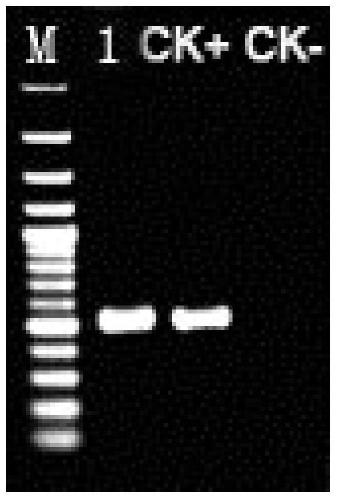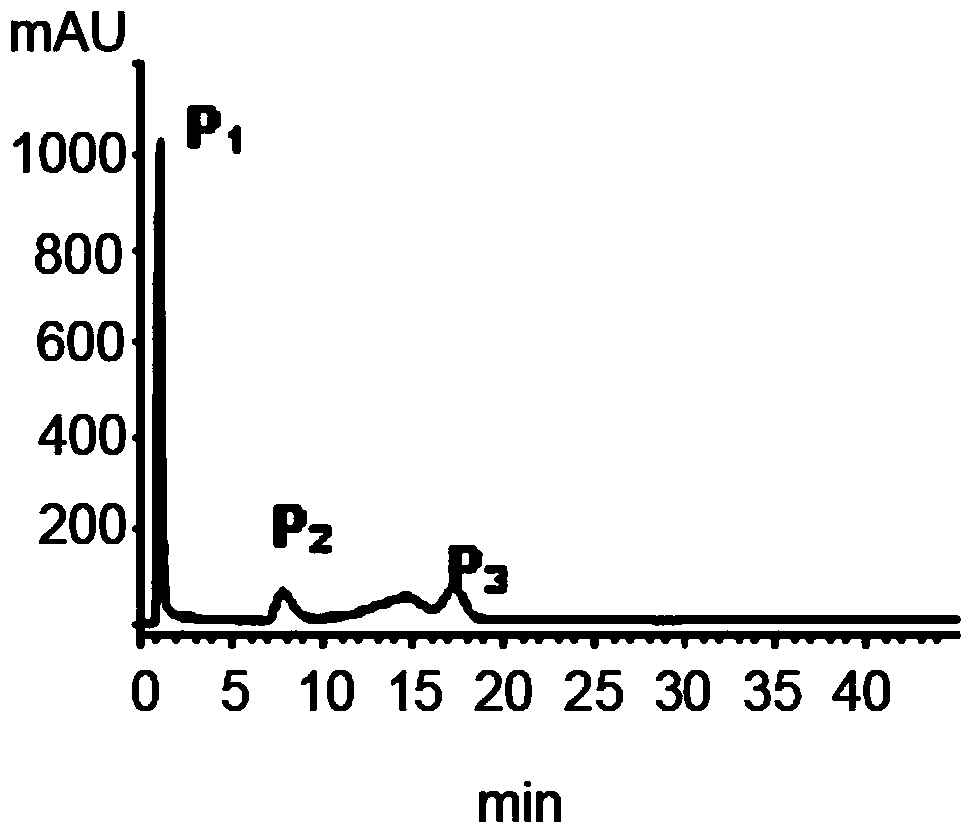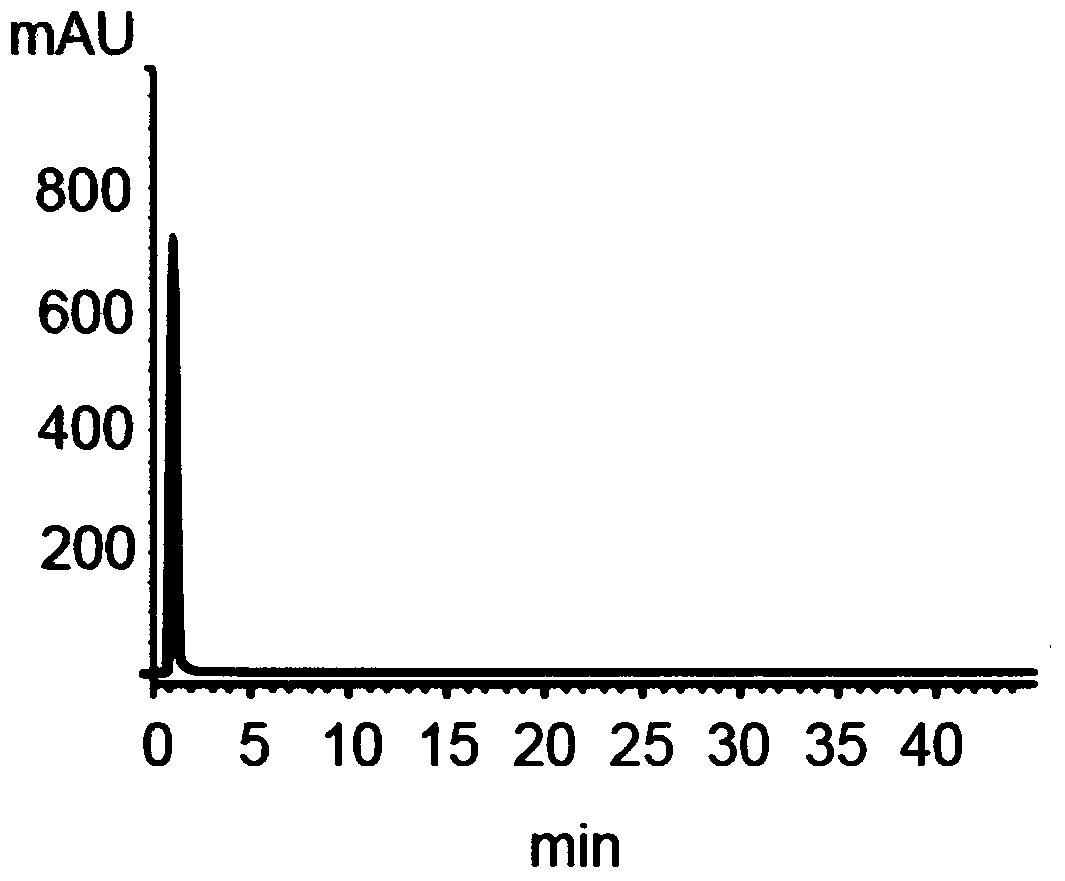A high-purity non-pathogenic Ralstonia solanacearum strain
A non-pathogenic technology for R. solanacearum, applied in the direction of bacteria, microorganism-based methods, microorganisms, etc., can solve the problems of different adsorption capacity, non-pathogenicity, and different charges, and achieve stable biological properties , the effect of high purity
- Summary
- Abstract
- Description
- Claims
- Application Information
AI Technical Summary
Problems solved by technology
Method used
Image
Examples
Embodiment 1
[0014] The isolation of embodiment 1 bacterial strain FJAT-1957
[0015] (1) Weigh 5 g of tomato stems from the healthy plants of Lvhe Chengsheng Co., Ltd. in Jiaodang Village, Fuding City, Fujian Province, and rinse them with water, and cut the tomato stems after washing. Then, under aseptic conditions, the small pieces of tissue were treated with 75% alcohol for 30 seconds, sterilized with 10% sodium hypochlorite for 8 minutes, and rinsed with sterile water for 3 times; Obtain tissue fluid, and then draw 1mL of tissue fluid for gradient dilution, and the selected dilution is 10 -1 、10 -2 、10 -3 、10 -4 、10 -5 、10 -6 and 10 -7 ;
[0016] (2) Spread 200 μL of the diluted solution obtained in step (1) on a TTC plate, and then place the TTC plate at 30° C. for 2 days;
[0017] (3) Streak-inoculate the strain obtained in step (2) on the TTC medium again, and culture the TTC medium at 30° C. for 48 h, and name the strain obtained from the culture as strain FJAT-1957.
Embodiment 2
[0018] Identification of embodiment 2 bacterial strain FJAT-1957:
[0019] Initial identification:
[0020] The colonies of the obtained bacterial strain FJAT-1957 were placed under a Leica M165FC advanced motorized fluorescent stereo microscope for microscopic observation. The observation results showed that the colony morphology of the bacterial strain FJAT-1957 was relatively dry on the surface, without fluidity, and dark red in the middle. And the strain with narrow white border, therefore, it can be preliminarily identified that the strain FJAT-1957 belongs to the genus Ralstia solanacearum.
[0021] Further identification:
[0022] Activation of strain FJAT-1957: Streak the obtained strain FJAT-1957 on the TTC medium with an inoculation loop, and place the TTC medium in a constant temperature incubator for 48 hours at a temperature of 30°C; the strain FJAT-1957 was obtained single colony;
[0023] Preparation of seed solution: Inoculate a single colony of the obtained...
Embodiment 3
[0032] Pathogenicity test of embodiment 3 bacterial strain FJAT-1957
[0033] Set up an experimental group, a negative control group and a positive control group. In the experimental group, the strain FJAT-1957 was activated on a TTC plate, inoculated in SPA liquid medium, and cultured at 170r / min and 30°C for 48h. diluted to 10 8 cfu / mL, then inoculate the roots of the diluted bacterial solution on tomato potted seedlings at the age of 5-6 (one tomato seedling is planted in each pot), the inoculation volume is 80 mL / plant, and a total of 30 tomato seedlings are inoculated; while negative The control group replaced the bacterial liquid dilution of bacterial strain FJAT-aRS01 with clear water; the positive control group replaced the bacterial liquid dilution of bacterial strain FJAT-1957 with the bacterial liquid dilution of the existing recognized R. solanacearum standard strain GMI1000; The treated tomato seedlings in each group were placed in a light incubator for cultivati...
PUM
 Login to View More
Login to View More Abstract
Description
Claims
Application Information
 Login to View More
Login to View More - R&D
- Intellectual Property
- Life Sciences
- Materials
- Tech Scout
- Unparalleled Data Quality
- Higher Quality Content
- 60% Fewer Hallucinations
Browse by: Latest US Patents, China's latest patents, Technical Efficacy Thesaurus, Application Domain, Technology Topic, Popular Technical Reports.
© 2025 PatSnap. All rights reserved.Legal|Privacy policy|Modern Slavery Act Transparency Statement|Sitemap|About US| Contact US: help@patsnap.com



